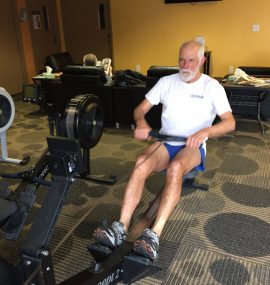Stroke is a leading cause of disability and poor quality of life
Healthy lifestyle choices can largely prevent or postpone stroke
You’ve all heard of stroke, but what is it, anyway? Stroke refers to either a clot in an artery in the brain that blocks blood flow (ischemic stroke) or a blood vessel in the brain that breaks (hemorrhagic stroke). Brain tissue starts to die, because it’s deprived of oxygen. Depending on the location of the block / break, paralysis, loss of speech, and/or death can occur. Stroke is the leading cause of death and adult disability globally.
The INTERHEART Study found that nine modifiable risk factors explained most of the risk of heart attack globally. Would these same risk factors explain most of the risk of stroke, as well? The INTERSTROKE Study addressed this question across 22 low-, middle-, and high-income countries. Researchers used a case-control approach in which the first 3,000 cases of stroke that occurred were matched for age and sex with 3,000 persons without stroke. Stroke was classified as ischemic or hemorrhagic. The vast majority of strokes fell in the ischemic category.
It turned out that nine risk factors (history of hypertension, current smoking, high waist-to-hip ratio, poor diet score, low physical activity, type 2 diabetes, excessive alcohol intake, high psychosocial stress, and a high ratio of apolipoprotein B to apolipoprotein A1) accounted for over 90 percent of stroke cases globally. Of these risk factors, hypertension was by far the most important. This is actually a good-news story. Why? Because all of these risk factors can be eliminated or reduced by people who adopt healthy choices, especially Keep Moving and Eat Better.
In 2016, a team of researchers updated the 2010 INTERSTROKE study using a data from the Global Burden of Disease Study 2013 to assess longevity adjusted for disability in relation to 17 modifiable behavioral, metabolic, physiological, and occupational factors. Analyses showed that 90 percent of the stroke burden was attributable to the 17 modifiable risk factors. These factors included 1) ambient particulate matter pollution, 2) household air pollution from solid fuels, 3) lead exposure, 4) diet high in sodium, 5) diet high in sugar-sweetened beverages, 6) diet low in fruits, 7) diet low in vegetables, 8) diet low in whole grains, 9) alcohol consumption, 10) low physical activity, 11) smoking, 12) second-hand smoke, 13) high body-mass index, 14) high fasting blood glucose, 15) high systolic blood pressure, 16) high total cholesterol, and 17) low kidney filtration rate.
The three most important factors related to smoking, poor diet, and low physical activity. Persons who don’t smoke, eat a healthy diet, and get plenty of physical activity could reduce their risk of stroke by three-quarters. These and other healthy choices could potentially prevent 85-95 percent of stroke cases in the US.
Clinical guidelines recommend physical exercise to prevent stroke. A groups of Norwegian researchers wondered whether change in one aspect of physical activity, namely cardiorespiratory fitness, would predict risk of stroke over time. Study subjects included 1,403 men aged 40-59 years living in Oslo, Norway, as part of the Oslo Ischemia Study. Participants rode a stationary bike to measure cardiorespiratory fitness, expressed in Metabolic Equivalent Task (MET) units, at baseline during 1972-1975 and seven years later. Subjects were classified in four groups: 1) those who were unfit as baseline and remained so over seven years, 2) those who were unfit at baseline and became fit over seven years, 3) those who were fit at baseline and remained so over seven years, and 4) those who were fit at baseline and became unfit over seven years.
At the end of an average follow-up of 23.6 years, and compared to subjects who became unfit, those who remained fit or became fit had significant 57 and 66 percent lower risks of having a stroke, respectively. Similarly, compared to those who became unfit, those who remained fit or became fit had significant 57 and 65 percent lower risks of dying, respectively. These results reflect accounting for traditional cardiovascular risk factors. Thus, middle-aged and older men who substantially increase their cardiovascular fitness can expect to greatly reduce their risk of having a stroke or dying prematurely.
As a youth, I was fascinated by my Great Uncle Carl. He had a stroke that left him in a wheel chair unable to speak normally, plus it paralyzed one of his hands. It seemed to me that Carl was a prisoner inside his body. I decided at an early age that I was not going to suffer a stroke. How about you? If you don’t want to suffer a stroke, I recommend highly embracing the healthy choices of Keep Moving and Eat Better.








